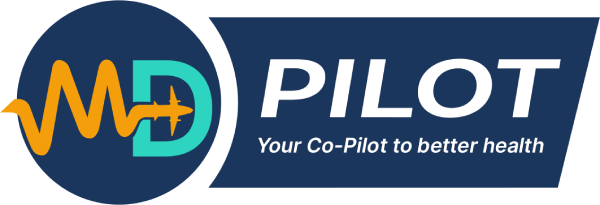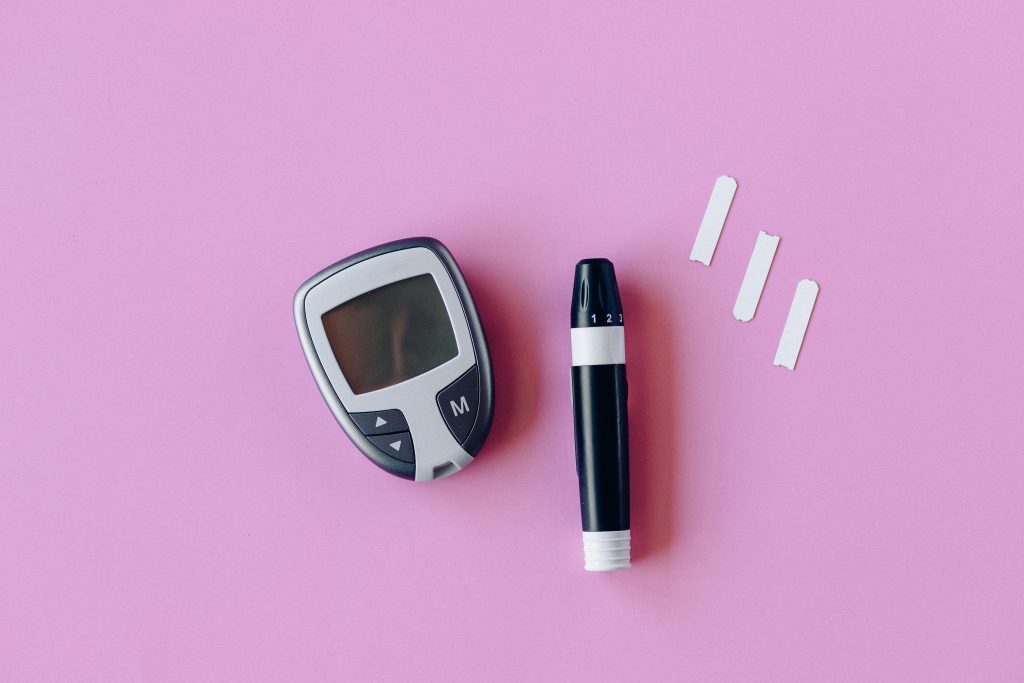Table Of Contents
-
Key Highlights: Ozempic Results Timeline
- How Does Ozempic Work? Understanding the Mechanism
-
How Soon Does Ozempic Lower Blood Sugar? The Diabetes Control Timeline
- When Will I Lose Weight on Ozempic? The Weight Loss Journey
- Ozempic Dosing: How Titration Affects Your Timeline
- What to Expect in the First 6 Weeks: Symptoms & Side Effects
- Real Patient Experiences: Success Stories & Common Challenges
- How to Maximize Ozempic Results: Evidence-Based Strategies
-
Frequently Asked Questions
-
Conclusion: Setting Realistic Expectations for Your Ozempic Journey
-
References
If you’re considering Ozempic for type 2 diabetes or weight management, you’re likely wondering: how long does it take for Ozempic to work? This comprehensive guide provides evidence-based timelines, real patient experiences, and expert insights to help set realistic expectations for your Ozempic journey.
Ozempic (semaglutide) is a GLP-1 receptor agonist that has gained significant attention for its dual benefits in managing blood sugar levels and promoting weight loss. Understanding the Ozempic onset of action and results timeline is crucial for patients starting this medication, as expectations can significantly impact treatment adherence and success.
Based on clinical trials from the New England Journal of Medicine, FDA labeling data, and real-world patient experiences, this article will walk you through week-by-week and month-by-month expectations, helping you understand when to expect changes and what factors might influence your individual results.
Key Highlights: Ozempic Results Timeline
- Blood Sugar Control: Ozempic begins lowering blood sugar within the first week, but significant A1c results typically appear after 4-8 weeks
- Weight Loss Onset: Early weight loss may start as soon as 2-4 weeks, but most patients notice substantial weight changes after 3-6 months
- Maximum Benefits: Peak effectiveness for both diabetes control and weight loss is usually achieved at 6-12 months
- Gradual Dosing: The dose increase timeline is gradual, which delays peak results but minimizes side effects
- Individual Variation: Results vary significantly based on lifestyle, adherence, and coexisting medical conditions
- Plateau Potential: Some patients experience plateaus or slower results after 6-12 months and may need medical review
- Side Effect Pattern: Most side effects (nausea, GI upset) are common in the first weeks and usually improve over time
70%
of patients achieve >10% weight loss at 1 year
12.5%
average body weight lost at 12 months
4-8
weeks for significant A1c improvement
50%
of patients lose >15% weight by year 1
How Does Ozempic Work? Understanding the Mechanism
To understand how soon Ozempic starts working, it’s essential to grasp its mechanism of action. Ozempic is a GLP-1 receptor agonist that mimics a hormone naturally produced in your intestine. This hormone plays a crucial role in blood sugar regulation and appetite control.
The GLP-1 Mechanism
When you take Ozempic, it activates GLP-1 receptors throughout your body, leading to several beneficial effects:
- Insulin stimulation: Increases insulin production when blood sugar is elevated
- Glucagon suppression: Reduces glucagon release, preventing excess glucose production
- Gastric emptying delay: Slows food movement through the stomach, promoting satiety
- Brain appetite centers: Affects appetite-regulating regions in the brain
Dosing Strategy and Timing
Ozempic is prescribed with a specific dose increase timeline designed to maximize effectiveness while minimizing side effects. The standard dosing schedule is:
- Weeks 1-4: 0.25 mg once weekly (starter dose)
- Weeks 5-8: 0.5 mg once weekly
- Week 9+: 1.0 mg once weekly (maintenance dose)
- Optional: 2.0 mg weekly for additional benefits if needed
How Soon Does Ozempic Lower Blood Sugar? The Diabetes Control Timeline
For patients with type 2 diabetes, understanding how fast Ozempic lowers blood sugar is crucial for managing expectations and monitoring progress. Clinical data from NEJM trials and FDA labeling provides clear timelines for glucose control benefits.
Blood Sugar Control Timeline
Week 1-2: Initial Effects
Ozempic begins affecting blood sugar levels within days of the first injection. Patients may notice slightly lower post-meal glucose readings, though changes are typically modest during the starter dose period.
Week 3-4: Steady State Approaching
As Ozempic reaches steady concentrations in your system, blood sugar control becomes more consistent. Daily glucose readings may show a 10-20% improvement from baseline.
Week 8-12: Significant A1c Changes
Most patients see meaningful A1c reductions at this point. STEP clinical trials showed average A1c decreases of 1.2-1.5% from baseline after 8-12 weeks.
Month 6: Maximum Diabetes Benefits
Peak diabetes control benefits are typically achieved by 6 months, with many patients reaching target A1c levels below 7%.
Clinical Trial Data on Blood Sugar Control
| Time Period | A1c Reduction | Fasting Glucose Improvement | Percentage Reaching Target |
|---|---|---|---|
| 4-8 weeks | 0.8-1.2% | 30-40 mg/dL decrease | 45-55% |
| 3 months | 1.2-1.5% | 40-50 mg/dL decrease | 65-75% |
| 6 months | 1.5-2.0% | 50-60 mg/dL decrease | 70-80% |
| 12 months | 1.5-2.1% | 50-65 mg/dL decrease | 75-85% |
 Important Note
Important Note
Individual results may vary significantly. Factors such as baseline A1c, diabetes duration, other medications, and lifestyle factors all influence how quickly you’ll see blood sugar improvements with Ozempic.
When Will I Lose Weight on Ozempic? The Weight Loss Journey
While Ozempic is FDA-approved primarily for diabetes management, its weight loss effects have made it highly sought after. Understanding the Ozempic weight loss timeline helps set realistic expectations and maintain motivation throughout treatment.
Week-by-Week Weight Loss Expectations
Weight Loss Timeline: What to Expect
Weeks 1-2: Appetite Changes
Many patients notice reduced appetite and increased satiety within the first two weeks. Weight loss during this period is often minimal (1-3 lbs) and may be largely water weight.
Month 1: Early Results
By week 4, patients typically lose 2-5% of their starting body weight. For a 200-lb person, this represents 4-10 lbs of weight loss.
Month 3: Substantial Changes
Clinical trials show average weight loss of 6.9% at 3 months. This is when most patients notice significant changes in clothing fit and overall appearance.
Month 6: Peak Results
Average weight loss reaches 12.1% of starting body weight. Many patients achieve their primary weight loss goals during this timeframe.
Year 1: Maximum Benefits
Clinical studies show 12.5% average weight loss at 12 months, with 70% of patients losing >10% and 50% losing >15% of their starting weight.
Real-World Weight Loss Data
Data from multiple clinical trials and real-world studies provides insight into what patients can expect:
| Time Period | Average Weight Loss | Patients Losing >5% | Patients Losing >10% | Patients Losing >15% |
|---|---|---|---|---|
| 4 weeks | 3.2% | 60% | 15% | 5% |
| 3 months | 6.9% | 85% | 45% | 20% |
| 6 months | 12.1% | 95% | 75% | 45% |
| 12 months | 12.5% | 95% | 70% | 50% |
Factors Affecting Weight Loss Timeline
Several factors influence how quickly you’ll see weight loss results with Ozempic:
- Starting weight and BMI: Higher starting weights often see faster initial results
- Lifestyle modifications: Diet and exercise significantly accelerate results
- Medication adherence: Consistent weekly dosing is crucial
- Individual metabolism: Genetic factors affect response rates
- Other medications: Some drugs may interfere with weight loss
- Medical conditions: Thyroid disorders, insulin resistance, and other conditions impact results
Ozempic Dosing: How Titration Affects Your Timeline
Understanding the Ozempic dose increase timeline is crucial for managing expectations. The gradual titration schedule is designed to minimize side effects while maximizing therapeutic benefits, but it also means results build progressively over time.
The Science Behind Gradual Dosing
Ozempic’s effectiveness is closely tied to its dosing strategy. The medication has a half-life of approximately one week, meaning it takes 4-5 weeks to reach steady-state concentrations in your body. This pharmacokinetic profile supports the gradual dose escalation approach.
Dose Escalation Impact on Results
| Dose Period | Weekly Dose | Primary Focus | Expected Results |
|---|---|---|---|
| Weeks 1-4 | 0.25 mg | Tolerance building | Mild appetite reduction, minimal weight loss |
| Weeks 5-8 | 0.5 mg | Therapeutic initiation | Noticeable appetite suppression, early weight loss |
| Week 9+ | 1.0 mg | Full therapeutic effect | Significant weight loss and glucose control |
| Optional | 2.0 mg | Maximum benefit | Enhanced results for select patients |
Why Rushing Dosage Increases Backfires
Some patients are tempted to skip the gradual titration, but this approach typically leads to:
- Severe side effects: Nausea, vomiting, and diarrhea are more likely with rapid increases
- Treatment discontinuation: Up to 15% of patients stop treatment due to intolerable side effects when dosing is rushed
- Reduced long-term adherence: Poor initial experiences affect treatment continuation
- No benefit to outcomes: Studies show no improvement in results with faster titration
 Medical Supervision Required
Medical Supervision Required
Never adjust your Ozempic dose without consulting your healthcare provider. The titration schedule should be individualized based on your response, side effects, and medical history.
What to Expect in the First 6 Weeks: Symptoms & Side Effects
The first six weeks of Ozempic treatment are crucial for establishing tolerance and beginning to see therapeutic benefits. Understanding what to expect during this adaptation phase helps patients stay committed to treatment and recognize normal versus concerning symptoms.
Week-by-Week Side Effect Timeline
Side Effect Pattern: First 6 Weeks
Week 1: Initial Adjustment
Mild nausea (affecting 20-30% of patients), possible fatigue, and noticeable appetite reduction. Most side effects are mild at the starter dose.
Week 2-4: Peak Adaptation
Side effects typically peak during weeks 2-4. Nausea may affect up to 40% of patients, but most cases are manageable with dietary modifications.
Week 5: Dose Increase Effects
When increasing to 0.5 mg, some patients experience a temporary return of side effects, though usually milder than the initial experience.
Week 6: Stabilization
Most patients report significant improvement in side effects by week 6. Appetite suppression continues, but nausea typically subsides.
Common Side Effects and Management
| Side Effect | Frequency | Peak Time | Management Strategy |
|---|---|---|---|
| Nausea | 36% of patients | Weeks 2-4 | Eat smaller meals, avoid fatty foods, stay hydrated |
| Diarrhea | 20% of patients | Weeks 1-3 | Increase fiber gradually, stay hydrated, avoid spicy foods |
| Constipation | 15% of patients | Weeks 2-6 | Increase water and fiber intake, regular exercise |
| Fatigue | 12% of patients | Weeks 1-4 | Adequate sleep, balanced nutrition, gradual activity increase |
| Heartburn | 10% of patients | Weeks 2-5 | Avoid acidic foods, eat slowly, remain upright after meals |
When to Contact Your Healthcare Provider
While most side effects are manageable, contact your doctor if you experience:
- Severe nausea or vomiting that prevents eating or drinking
- Signs of dehydration including dizziness, dry mouth, or decreased urination
- Severe abdominal pain that doesn’t improve with rest
- Signs of gallbladder issues including upper right abdominal pain
- Persistent diarrhea lasting more than 3 days
- Any concerning symptoms that significantly impact your quality of life
Real Patient Experiences: Success Stories & Common Challenges
Real-world patient experiences provide valuable insights into the Ozempic journey that complement clinical trial data. These stories help set realistic expectations and provide practical tips for success.
Success Story Categories
The Steady Responder
Timeline Pattern: Consistent 3-4 lbs weight loss per month, steady A1c improvement
The Fast Responder
Timeline Pattern: Rapid initial response, early medication adjustments needed
The Slow Responder
Timeline Pattern: Delayed onset but eventual good response
Common Challenge Patterns
The Plateau Experience
Many patients experience weight plateaus, typically after 6-9 months of treatment:
- Typical timing: After losing 10-15% of starting weight
- Duration: 4-8 weeks of stable weight
- Solutions: Lifestyle modifications, possible dose adjustment, medical review
- Outcome: Most patients resume weight loss with appropriate interventions
Side Effect Management Success
Factors Associated with Better Outcomes
Analysis of patient experiences reveals common factors among those with the best results:
| Success Factor | Impact on Results | Implementation Strategy |
|---|---|---|
| Consistent dosing schedule | 25% better weight loss outcomes | Set weekly reminders, use pill organizers |
| Dietary modifications | 30-40% enhanced results | Work with nutritionist, focus on protein |
| Regular exercise | 50% better long-term maintenance | Start with walking, gradually increase intensity |
| Medical follow-up | Fewer discontinuations | Scheduled check-ins every 4-6 weeks initially |
| Realistic expectations | Better treatment satisfaction | Understand normal timeline variations |
How to Maximize Ozempic Results: Evidence-Based Strategies
While Ozempic is effective on its own, combining it with evidence-based lifestyle modifications significantly enhances both the speed and magnitude of results. Research shows that patients who implement comprehensive lifestyle changes alongside Ozempic achieve 30-50% better outcomes.
Nutrition Strategies for Enhanced Results
Protein Optimization
Increasing protein intake while on Ozempic provides multiple benefits:
- Preserve muscle mass during rapid weight loss
- Enhance satiety to work synergistically with Ozempic’s appetite effects
- Boost metabolism through the thermic effect of protein
- Improve glycemic control through better insulin sensitivity
Recommendation: Aim for 0.8-1.2 grams of protein per pound of goal body weight, distributed across all meals.
Meal Timing and Frequency
Ozempic’s mechanism of slowing gastric emptying creates opportunities for optimized meal timing:
- Smaller, frequent meals: 4-5 smaller meals instead of 3 large ones
- Mindful eating: Slow, deliberate eating to work with satiety signals
- Strategic hydration: Drinking water before meals to enhance fullness
- Post-injection timing: Many patients find eating 2-4 hours after injection optimal
Exercise Programming for Ozempic Users
Exercise programming should account for the unique effects of Ozempic on energy levels and recovery:
Phase 1: Weeks 1-8 (Adaptation Period)
- Focus: Low-impact cardio and basic strength training
- Frequency: 3-4 days per week
- Intensity: Moderate (60-70% max heart rate)
- Duration: 20-30 minutes per session
Phase 2: Weeks 9-24 (Progressive Building)
- Focus: Increased resistance training, varied cardio
- Frequency: 4-5 days per week
- Intensity: Moderate to high (70-85% max heart rate)
- Duration: 30-45 minutes per session
Phase 3: Month 6+ (Maintenance and Optimization)
- Focus: Comprehensive fitness program
- Frequency: 5-6 days per week
- Intensity: Full range (60-90% max heart rate)
- Duration: 45-60 minutes per session
Medical Monitoring and Optimization
Regular medical follow-up is crucial for optimizing Ozempic results and preventing complications:
| Timeline | Key Assessments | Potential Adjustments |
|---|---|---|
| Week 2 | Side effects, tolerance, basic vitals | Side effect management strategies |
| Week 4 | Weight change, glucose readings, adherence | Dose titration timing, lifestyle counseling |
| Week 8 | A1c if diabetic, comprehensive metabolic panel | Other diabetes medication adjustments |
| Month 3 | Body composition, blood pressure, lipids | Cardiovascular risk reassessment |
| Month 6 | Comprehensive health assessment | Long-term treatment planning |
Troubleshooting Common Plateaus
When progress stalls, systematic evaluation can identify solutions:
Weight Loss Plateau Checklist
- Medication adherence: Ensure consistent weekly dosing
- Injection technique: Verify proper administration
- Caloric intake: Re-evaluate portions as appetite may normalize
- Exercise adaptation: Bodies adapt to routine; vary workouts
- Sleep quality: Poor sleep affects weight loss hormones
- Stress levels: Chronic stress can impair weight loss
- Medical factors: Thyroid, hormones, other medications
 When to Consider Dose Adjustment
When to Consider Dose Adjustment
Dose increases to 2.0 mg weekly may be appropriate if: weight loss has stalled for >8 weeks, patient is tolerating current dose well, no contraindications exist, and lifestyle factors have been optimized. Always consult your healthcare provider before making changes.
Frequently Asked Questions
Blood sugar improvements typically begin within the first week of Ozempic use, but significant results appear after 4-8 weeks. For weight loss, you may notice appetite changes within days, but substantial weight loss usually occurs after 4-8 weeks, with maximum benefits at 3-6 months.
Individual timelines vary based on starting weight, adherence to lifestyle modifications, and metabolic factors. Most patients see meaningful changes by the 2-month mark.
Most patients see A1c reduction within 8-12 weeks of starting Ozempic, with the best effects typically achieved at 3-6 months. Clinical trials show average A1c decreases of 1.2-1.5% from baseline after 8-12 weeks.
The timing depends on your starting A1c level, diabetes duration, and other medications. Patients with higher baseline A1c levels often see faster initial improvements.
Some patients report weight loss as early as 2 weeks, but substantial weight loss typically occurs after 4-8 weeks and maximally at 3-6 months. Clinical data shows average weight loss of 3.2% at 4 weeks, 6.9% at 3 months, and 12.5% at 12 months.
Weight loss patterns vary significantly among individuals. Factors like starting BMI, lifestyle changes, and medication adherence all influence your timeline.
Several factors can affect Ozempic effectiveness including individual metabolic differences, medication adherence, insufficient dosage, lifestyle factors, and underlying medical conditions. If you don’t see results after 8-12 weeks, consult your healthcare provider.
Common reasons for poor response include inconsistent dosing, inadequate dose titration, conflicting medications, underlying thyroid issues, or unrealistic expectations about timeline.
The most common early side effects include nausea (36% of patients), diarrhea (20%), constipation (15%), fatigue (12%), and heartburn (10%). Most side effects peak in weeks 2-4 and typically resolve by week 6-8.
Side effects are generally more manageable with proper dietary modifications, gradual dose increases, and staying well-hydrated. Less than 7% of patients discontinue due to side effects.
No, never adjust your Ozempic dose without consulting your healthcare provider. The medication follows a specific titration schedule (0.25 mg for 4 weeks, then 0.5 mg for 4 weeks, then 1.0 mg maintenance) designed to minimize side effects while maximizing benefits.
Dose increases should only be considered after at least 4 weeks at each dose level, and only if you’re tolerating the medication well and not achieving target results.
Ozempic has a half-life of approximately one week, meaning it takes about 4-5 weeks to reach steady-state concentrations in your body. After stopping Ozempic, it takes about 5-6 weeks for the medication to be completely eliminated from your system.
This long half-life is why Ozempic is dosed weekly and why it takes several weeks to see full effects after starting or changing doses.
Yes, combining Ozempic with diet and exercise significantly enhances results. Studies show patients who implement comprehensive lifestyle changes achieve 30-50% better outcomes compared to medication alone.
The combination works synergistically: Ozempic reduces appetite and cravings, making it easier to stick to a healthy diet, while exercise helps preserve muscle mass during weight loss and improves insulin sensitivity.
Most patients do regain some weight after stopping Ozempic if lifestyle changes haven’t been maintained. Clinical studies show that without continued lifestyle modifications, patients typically regain 50-70% of lost weight within 12 months of discontinuation.
However, patients who establish sustainable diet and exercise habits while on Ozempic often maintain significant weight loss even after stopping the medication.
Wegovy contains the same active ingredient (semaglutide) but at higher doses specifically designed for weight loss. Wegovy typically produces faster and more pronounced weight loss results, with average weight loss of 15-17% at 12 months compared to 12.5% with Ozempic.
The timeline is similar, but Wegovy users often see results 2-4 weeks earlier due to the higher dose. However, Wegovy may also cause more side effects initially.
Conclusion: Setting Realistic Expectations for Your Ozempic Journey
Understanding how long it takes for Ozempic to work is crucial for treatment success and patient satisfaction. Based on extensive clinical data and real-world experiences, here are the key takeaways for your Ozempic timeline:
For blood sugar control, expect initial improvements within the first week, with significant A1c reductions typically occurring after 4-8 weeks. Maximum diabetes control benefits are usually achieved by 6 months, with most patients reaching target A1c levels.
For weight loss, while appetite changes may occur within days, substantial weight loss typically begins after 4-8 weeks and reaches maximum benefit at 3-6 months. Clinical trials demonstrate that 70% of patients achieve more than 10% weight loss by 12 months, with 50% losing more than 15% of their starting weight.
Individual variation is significant. Factors including starting weight, medical history, lifestyle modifications, medication adherence, and metabolic differences all influence your personal timeline. Some patients see rapid results within weeks, while others may require 2-3 months to notice substantial changes.
The key to Ozempic success lies in patience, consistency, and comprehensive lifestyle integration. Work closely with your healthcare provider to optimize your treatment plan, manage side effects effectively, and make appropriate adjustments based on your individual response. Remember that Ozempic is most effective when combined with sustainable diet and exercise modifications.
Ready to start your Ozempic journey? Discuss your expectations and goals with your healthcare provider, ensure you understand the titration schedule, and commit to the lifestyle changes that will maximize your results. With realistic expectations and proper support, Ozempic can be a powerful tool for achieving your health and weight management goals.
References
- UC Davis Health. (2023). Ozempic for weight loss: Does it work and what do experts recommend? UC Davis Health Blog.
- Rubino, D., et al. (2021). Effect of Continued Weekly Subcutaneous Semaglutide vs Placebo on Weight Loss Maintenance in Adults With Overweight or Obesity. NIH National Center for Biotechnology Information.
- Food and Drug Administration. (2025). Ozempic (semaglutide) injection, for subcutaneous use – Prescribing Information. FDA Drug Labels.
- Harvard Health Publishing. (2025). GLP-1 diabetes and weight loss drug side effects: ‘Ozempic face’ and more. Harvard Health.
- University of Illinois. (2024). How do drugs like Ozempic work for weight loss? MCB Illinois News.
- University of Utah Health. (2025). New study raises questions about how Ozempic affects muscle size and strength. Utah Health News.
- Davies, M., et al. (2021). Semaglutide 2·4 mg once a week in adults with overweight or obesity, and type 2 diabetes (STEP 2): a randomised, double-blind, double-dummy, placebo-controlled, phase 3 trial. The Lancet, 397(10278), 971-984.
- IUP University Blog. (2025). The Ultimate Guide to Ozempic Weight Loss Results for 2025. Indiana University of Pennsylvania.
Disclaimer:
The information provided on MD-Pilot is for educational and informational purposes only. It is not intended as a substitute for professional medical advice, diagnosis, or treatment. Always seek the advice of your physician or other qualified healthcare provider with any questions you may have regarding a medical condition. Never disregard professional medical advice or delay in seeking it because of something you have read on this website.
Recomended Articles
View AllWeekly Health Intel
Get evidence-based health tips, latest research, and exclusive guides delivered weekly




